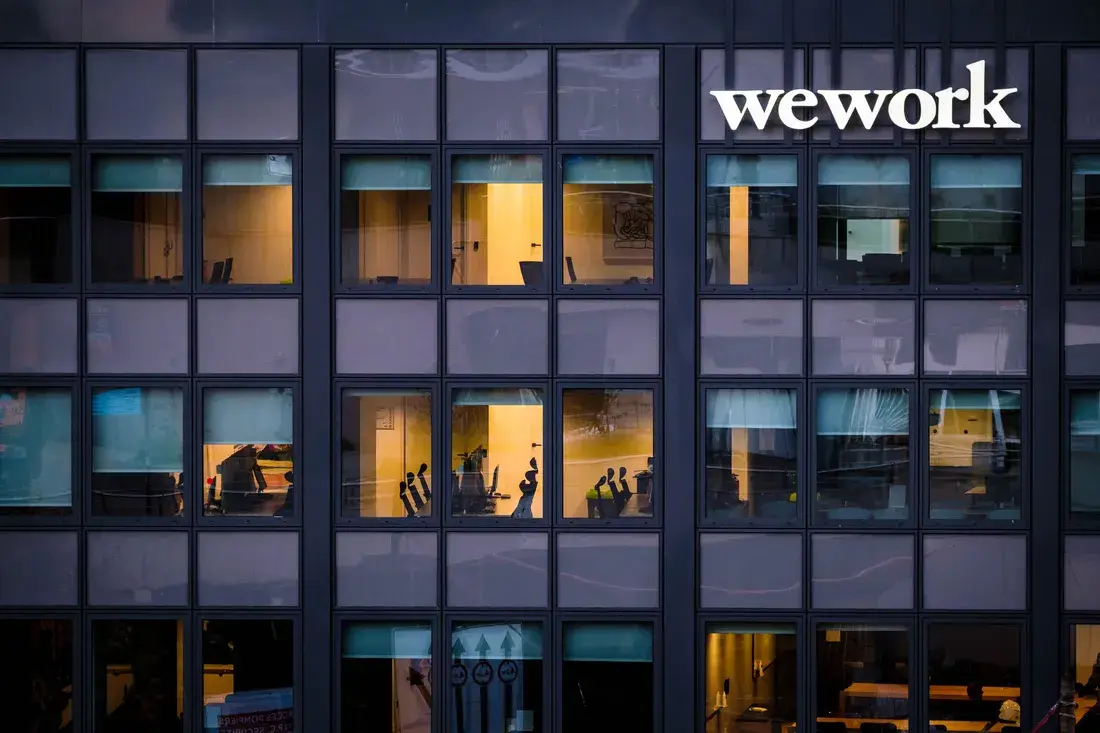Key Takeaway:
WeWork, a co-working firm founded by Adam Neumann and Miguel McKelvey in 2010, filed for bankruptcy after announcing its failure. The company, which rented out desks, offices, and meeting rooms to companies and freelancers, promoted itself as a tech company, promising to boost workers’ social interaction and innovation. However, Neumann claimed that the true “platform” for communication and collaboration was the office space itself. The collapse of WeWork casts doubt on the analogies between physical workspaces and computers, which have proliferated in recent years. The idea that offices were as dynamic and responsive as a computer obscured the fact that real estate is stubbornly physical, and constant maintenance is necessary for office buildings to age. The company’s bankruptcy brings this saga to a close and casts doubt on the idea that more communication and connectedness are always better.
On Nov. 6, the co-working firm WeWork filed for bankruptcy. WeWork, founded by Adam Neumann and Miguel McKelvey in 2010, had a simple business model: it signed long-term leases on urban buildings, fitting them out with modern work facilities. Then, it rented out desks, offices and meeting rooms to companies and freelancers seeking an easy-come, easy-go workplace.
WeWork was, in short, in the office subleasing business.
Yet Neumann promoted the firm as if it were a tech company, peppering his presentations with the buzzy language of Silicon Valley. He promised clients his offices would boost workers’ social interaction, leading to untold innovations. The company even developed an online social network, WeWork Commons.
But the true “platform” for communication and collaboration, Neumann said, was the office space itself. He described WeWork as a “physical social network” offering “space as a service.”
WeWork’s collapse casts doubt on analogies between physical workspaces and computers that have proliferated in recent years. Is an office — where people go to work in the morning, sit at desks and talk across conference tables — best understood as a piece of digital infrastructure?
Digital daydreams
When Neumann cast offices as a form of information technology, he traded on an idea — wildly popular in the 2010s — that the boundary between physical space and computers was dissolving.
Business leaders and tech journalists predicted a soon-to-be-pervasive “internet of things” (physical objects with embedded transmitters, so they can exchange data), the rise of “smart cities” (where municipal services are digitally monitored and optimized), and a new collective life in “augmented reality.”
These ideas are all based in real technology, but were caught up in a vortex of accelerating hype around the time WeWork was founded.
Cybernetic architecture
There’s a deeper history to predictions like this. In the 1960s, radical architects were enthralled by the rising field of computer science. They fantasized about buildings that would be as dynamic and responsive as a computer. These visions often had a countercultural tinge. For example, British architect Cedric Price designed a giant cultural centre whose rooms would rearrange themselves in real time with the help of a digital algorithm and a built-in crane.
Hungarian-French artist Nicolas Schöffer tried the idea at an urban scale, imagining a “cybernetic city” where citizens could alter their surroundings with the touch of a button.
And Japanese designer Kenzo Tange conceived buildings as giant communication apparatus with corridors serving as “information channels.”
Office as platform
The digital pipe dreams that inspired these radical visions also filtered into the prosaic task of designing corporate offices. Earlier in the twentieth century, offices were thought of as, essentially, industrial buildings. They were factories for paperwork, with documents passing from one desk to another like a car part down an assembly line.
But during World War II, executives witnessed the military use giant mainframes for logistics and deciphering codes. Afterwards, many started thinking of an office filled with workers as a kind of computing infrastructure.
The influential West German consultant Eberhard Schnelle described an office as an “information processing facility, one in which information processing plays out between people and within people.” To Schnelle, an office was like a programmable computer, with an algorithmic intelligence defined largely by its distinctive configuration of desks.
Amid the booming knowledge economy of the 1960s, CEOs loved the idea that they could improve office work just by freeing up the flow of communication. This theory inspired new office furniture like Herman Miller’s Action Office line of desks, shelves and partitions.
Managers would constantly optimize the flow of information through the office by adjusting the layout of the modular desks, like a programmer feeding an updated algorithm into a mainframe.
That was the idea, anyway.
The fantasy that offices were as dynamic and frictionless as a computer program obscured the fact that real estate is stubbornly physical. As office buildings age, they need constant maintenance. Changing the interior is a messy undertaking. Even rearranging supposedly flexible desks and partitions may involve hundreds of specialized parts. And at the end of the day, there’s no guarantee it will improve how people work.
The WeWork crash
Analogies between offices and computers faded during the recession of the 1970s. But they never really died out — especially in the San Francisco Bay Area, where digital networks found a surprising following among ex-hippies seeking alternative forms of community. When Neumann and McKelvey founded WeWork in 2010, few Silicon Valley investors stopped to question their analogy of an office to a social network.

Their enterprise rode a wave of enthusiasm for all things digital, and secured ever larger investments from tech venture capitalists. Yet, as analysts pointed out in retrospect, the business model of a tech firm never made sense for WeWork. A real estate company does not enjoy the same economies of scale or network effects as an online platform. Finally, in 2019, WeWork could no longer hide the fact that it was still losing money.
The company’s bankruptcy brings this saga to a close. It also casts doubt on the idea that more communication and connectedness are always better — an article of faith derived from the flower-child utopianism of early Silicon Valley.
Conflating physical space and digital platforms flattens the richness of social interaction into the linear logic of an algorithm. WeWork promoted the virtues of socializing, but only with fellow white-collar millennials — and always with an entrepreneurial sense of self-promotion.
Imagining buildings and cities as digital platforms erodes a sense of place where one could have a palpable sense of belonging, with a legible relation to the public realm.
Predictions about the future of the office often hang on fantasies of an imminent work revolution that never actually takes place. If history is any guide, office design and online systems will keep evolving in parallel, as distinct — and often complementary — technologies for work. The office will remain a place, not a platform.





























